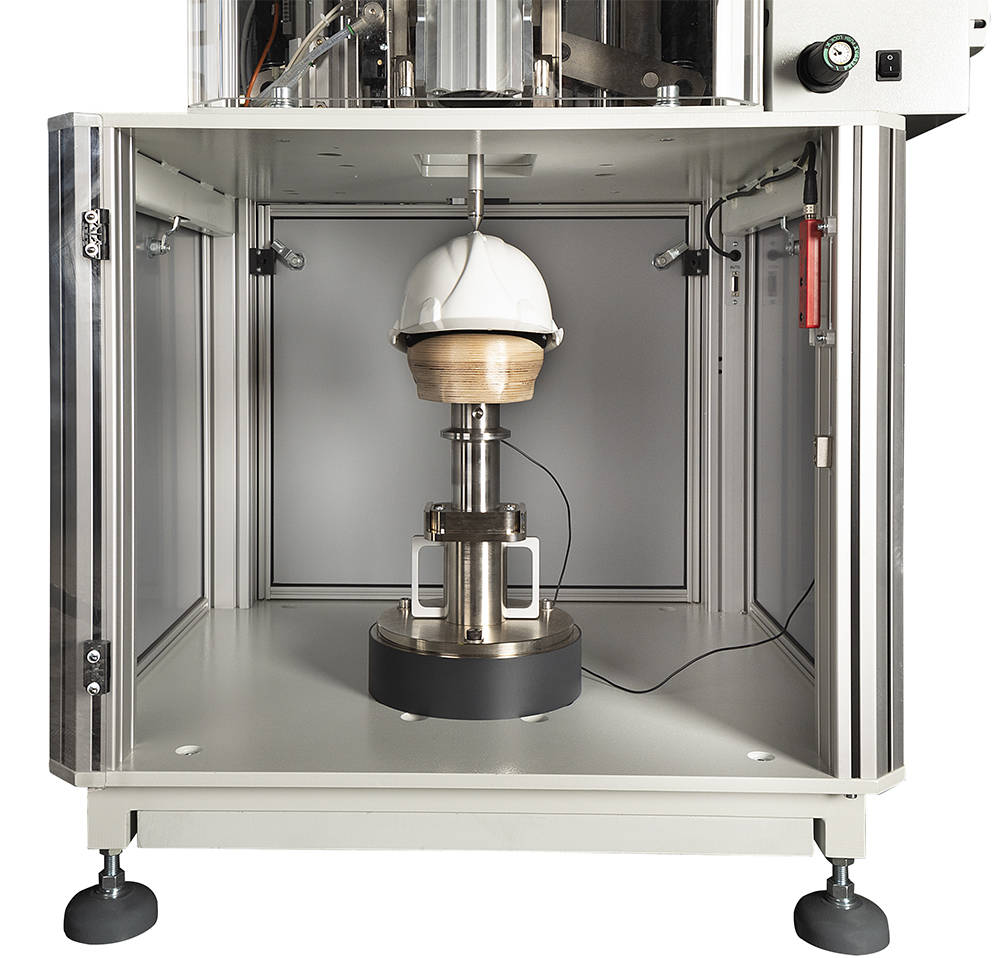It is critical that manufacturers of safety helmets are able to accurately determine how their product will distribute the shock of an impact, while protecting the head. Without sophisticated testing equipment, manufactures may not be able to accurately simulate force, geometries, and other impact characteristics that the helmets may be subjected to.
In the military field, the need for lightweight safety helmet is becoming significantly important for aircraft pilots as they experience high gravitational force during operations.
Recent advances and developments in composite materials enhanced performance capabilities of modern aircraft but tend to expose the pilot to increasingly significant occupational stresses and endurance. Because helmet should withstand impact energy and wind blast during emergency ejection from the aircraft, helmet should be light in weight without compromising its performance properties.
Textile composite structures have been serving in engineering applications for decades as they have good mouldability, low shear rigidity and ease of production. Textile composite structures are effective materials to reinforce helmet shells and achieve lower weight.
Airforce helmet testing procedures are defined in the MIL-STD 87174A testing standard. Critical factors need to be accurately fulfilled by the helmet shells to pass the test.
To identify the most appropriate helmet structure, we use a 9450 Impact Drop Tower equipped with an hemispherical un-instrumented tup insert of conical shape, having a 60 degree angled pointed tip. The adjustable height stand, located inside the 9450 impact drop tower testing area, is used to sustain the head forms of different circumferences.
During the pass/fail puncture impact test, the helmet shell is tightly fitted to the head form. Each head form is equipped with metallic palate and electrical contact points to detect the helmet shell penetration during impact.
Other than pass/fail impact tests, manufactures can make further evaluations to understand helmets’ absorbed energy from an impact. The amount of force transmitted through the helmet can be quantified with the force transmission package. In this test, the helmet is installed onto a head form, which is then mounted onto a custom Piezo Compression Platen. Data is collected through the Data Acquistion Systemand Bluehill Impact Software.
The Instron 9400 Series Impact Drop Tower Series flexibility is the perfect solution to evaluate materials and product quality. Instron drop tower solutions are designed to minimize loss of energy and improve data reproducibility, allow for simple setup of testing masses on a frictionless linear guidance system, tup inserts and supports, so that users can easily switch from high to low impact energies and from coupon to component testing.
The impact drop towers, combined with Bluehill Impact software, guarantee compliance to the test Standards and custom methods. Pre-configured test methods allow any operator to configure the system, run tests, and analyze results with minimal effort and increased efficiency.

